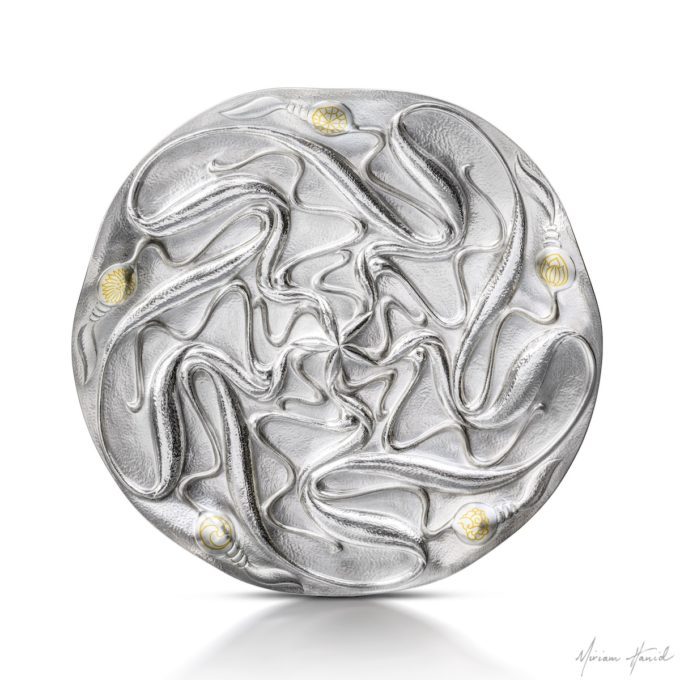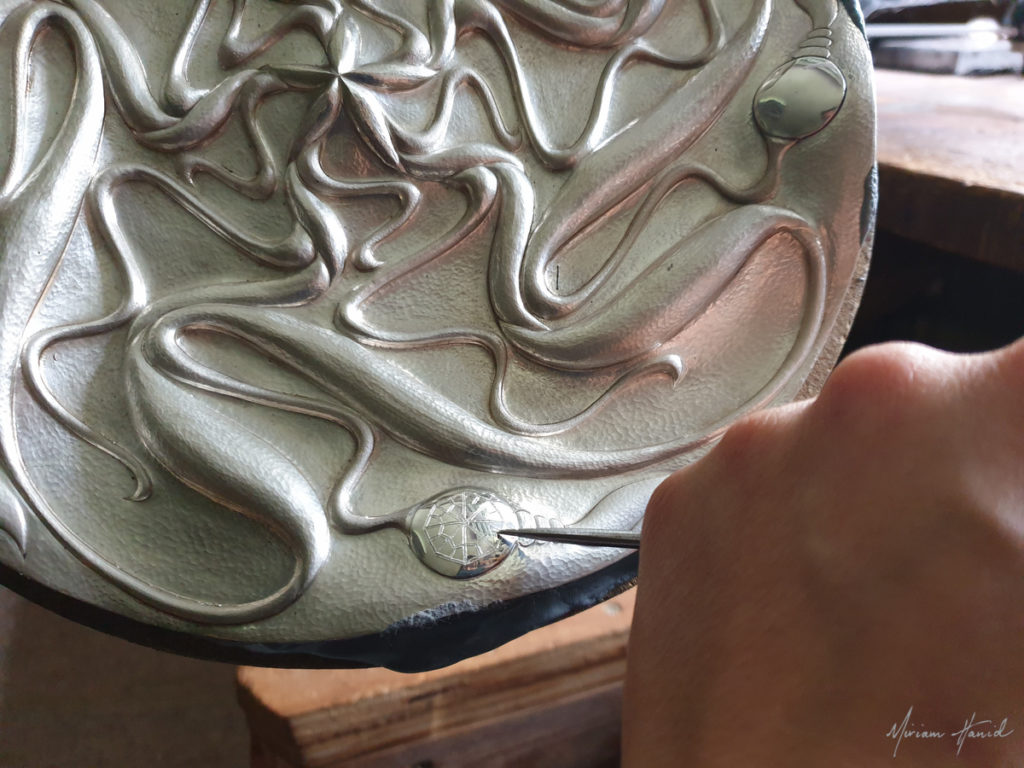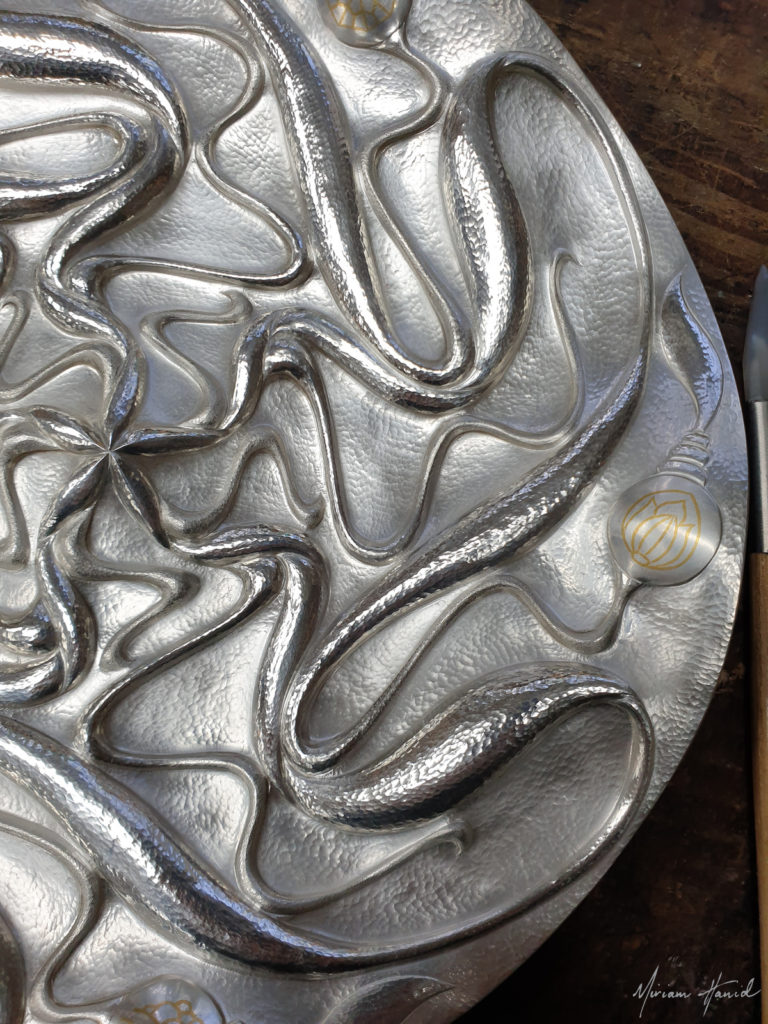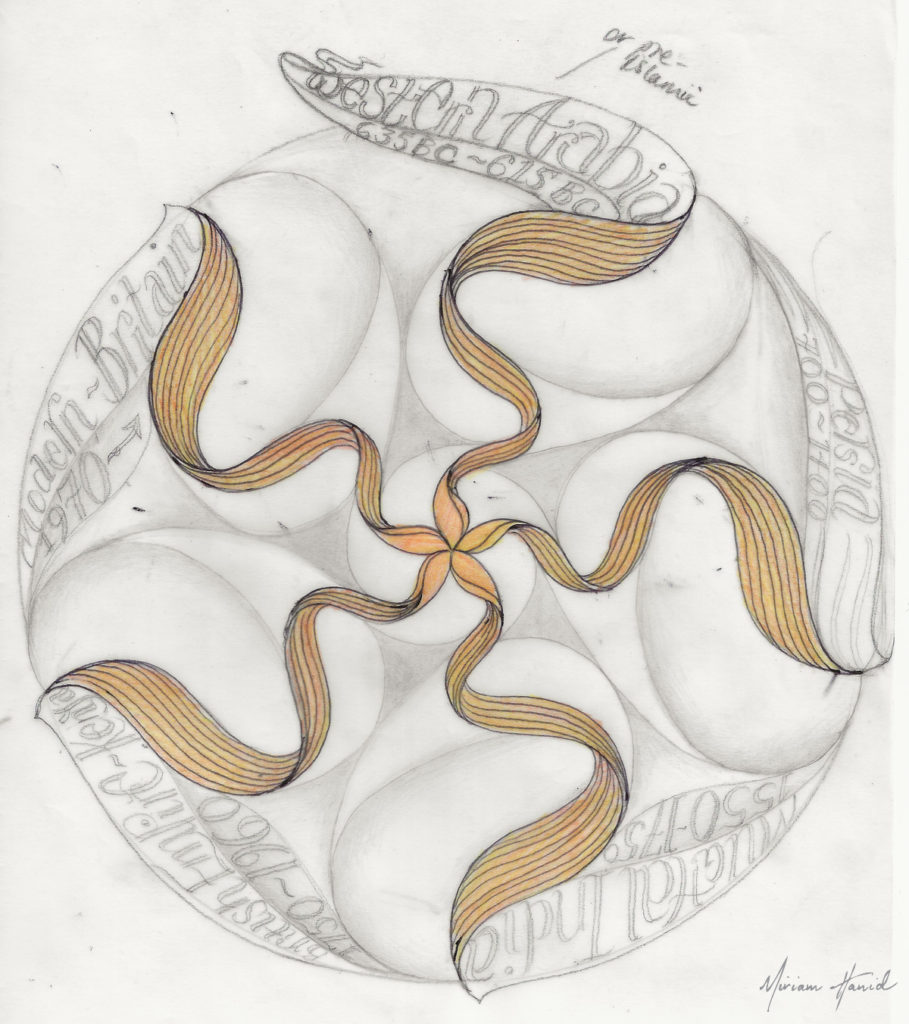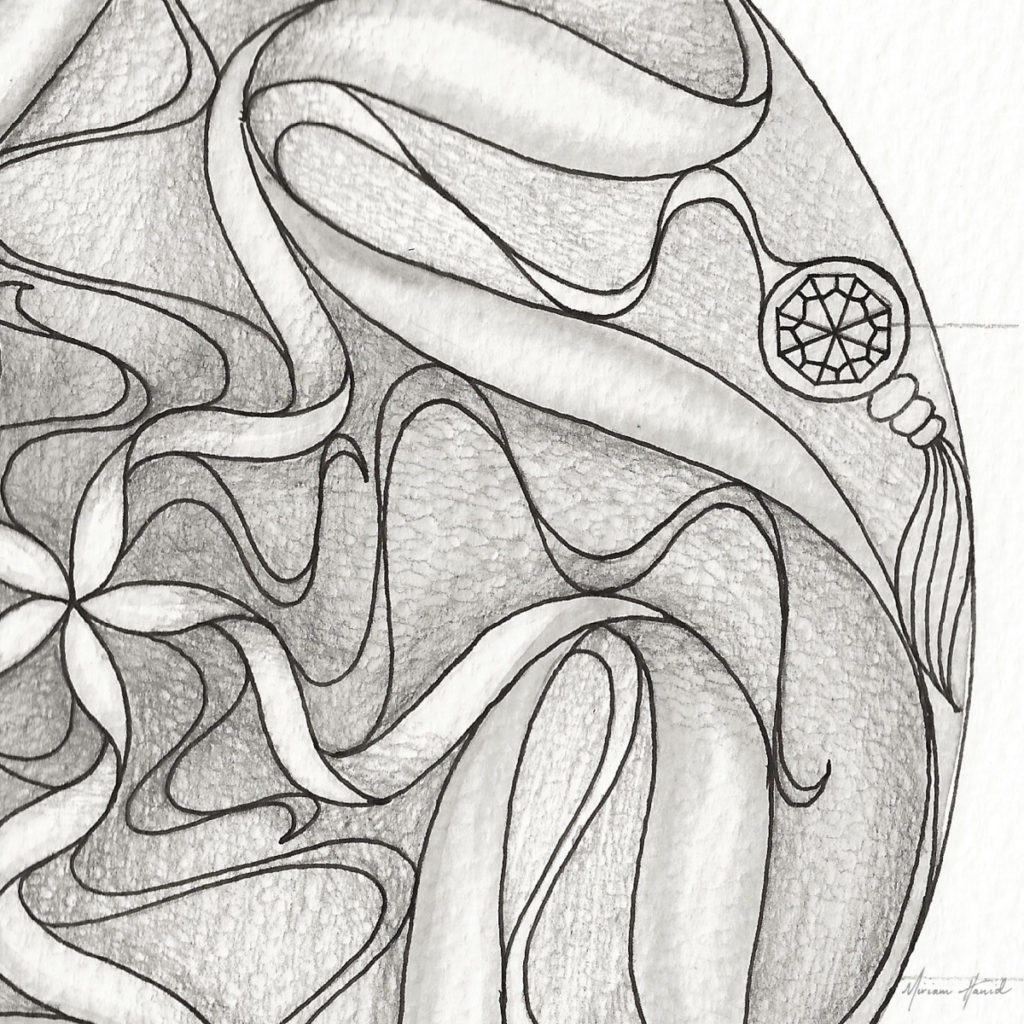“The past shapes the present and the present shapes the future.” Abrar Hanid-Awan, 2023
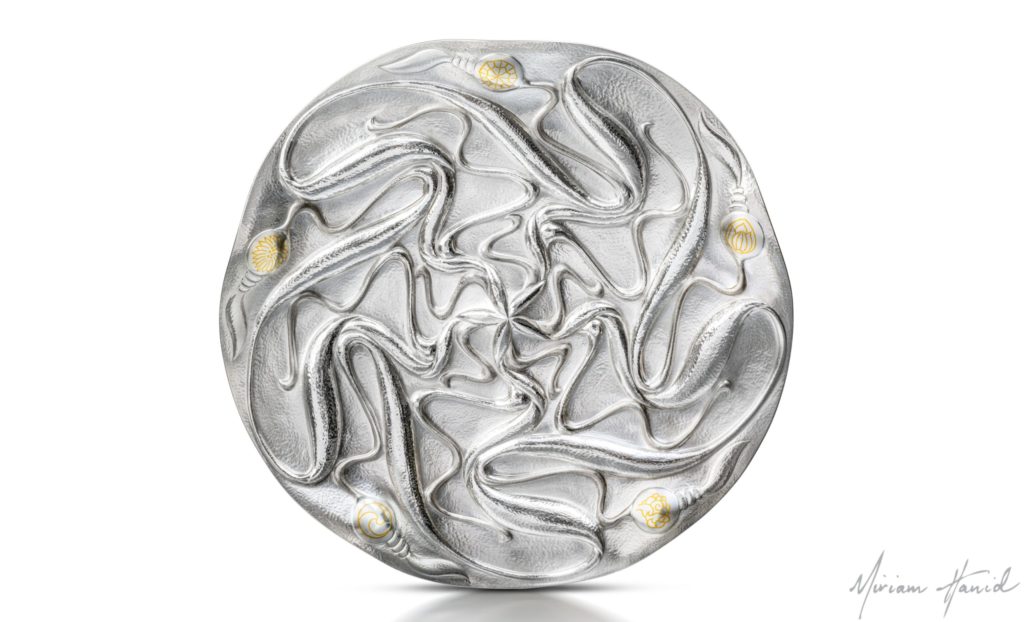
This post is the first in a series dedicated to a silver centrepiece which I have just finished making, a piece that has many layers of resonance for me, and my family. It provides an opportunity to reflect on our origins and aims to capture the spirit of human endurance over generations. As such, I hope it will resonate for others too. This artwork’s creation, from initial designs to finished silver dish, spanned a mere two years. The history underpinning this piece however, spans centuries…
‘An Introduction’
The ‘Threads of Time’ is both a commemorative piece and a celebration of the Hanid-Awan’s extraordinary family history since circa 600 B.C. It connects my family background, on my father’s side, and the story that I will relate is passed down through the generations by the age-old oral tradition and recitation. The piece also reflects aspects of the fascinating evolution of metalwork, a craft that first made its appearance in our family in the mid 1600’s – around the time of the Great Fire of London.
The techniques of koftgari, (gold inlay) as well as kukri sword forging, were amongst the specialist metalworking skills honed by my earlier metalworking ancestors.
More recently my great grandfather Wali Mohamed, in 20th century Nairobi, had a large business and workshop with as many as 70 skilled employees providing firearm engineering, metal casting, engraving and repairing services, and traditional silversmithing skills which he himself applied to many prestigious commissions. This included gifts for the soon to be crowned late Queen, Princess Elizabeth, when she visited Kenya in 1952. This memorable occasion had an echo through time when, in 2012, I was commissioned by The Drapers’ Company to make a silver band for the late Queen’s Diamond Jubilee Walking stick.
Within my latest commissioned piece ‘Threads of Time’, I have sought to honour the family history of skilled metalworking techniques through the application of my own signature techniques of chasing and repoussé. I have also used hand engraving to apply gold inlay, my artistic progression from koftgari, which is more of a burnished-on technique to create inlay, historically used in our extended family and ancestral village in the Indian sub-continent.
The use of gold inlay within a silver piece is not something which is commonly done, although other contemporary craftspeople, like me, are increasingly exploring the technique within their own works. More traditionally it has been mainly applied to guns or other steel objects.
However, in this series of posts you will find out how the technique of chasing and repoussé helped me in completing the gold inlay on relatively soft Britannia silver, and discover the full story behind the Threads of Time centrepiece.
Origins: Who are we and where do we come from?
Although I am most well known as Miriam Hanid, not many people know my full name – Miriam Bibi Hanid-Awan. Awan is our extended family name and is a derived plural of the Arabic word ‘Aun’ which means ‘helper’.
The commissioner of ‘Threads of Time’, Abrar Hanid-Awan – a cousin of my late Father, Abdul Qadeer Hanid-Awan – has been learning about our family history since his childhood. Now in mid-life he is instrumental in making sure the tradition of metalwork in our family is commemorated through silver commissions to be passed down through the generations as heirlooms. Threads of Time is one of these special pieces.
While looking at our documented family tree, Abrar started to think about the people and the times that our ancestors must have lived in. He was keen to dig into this a little more, and started to ‘window’ some of our ancestors into distinguishable periods. Those were the 5 ‘eras’ that we started off with as an inspiration for the centrepiece. The silver dish I made has 5 segments in the chased design, and each segment represents one era. Abrar gave me the dates of these and I went away to try and do research into potential visual links which could be used within my chased piece, but with a modern twist.
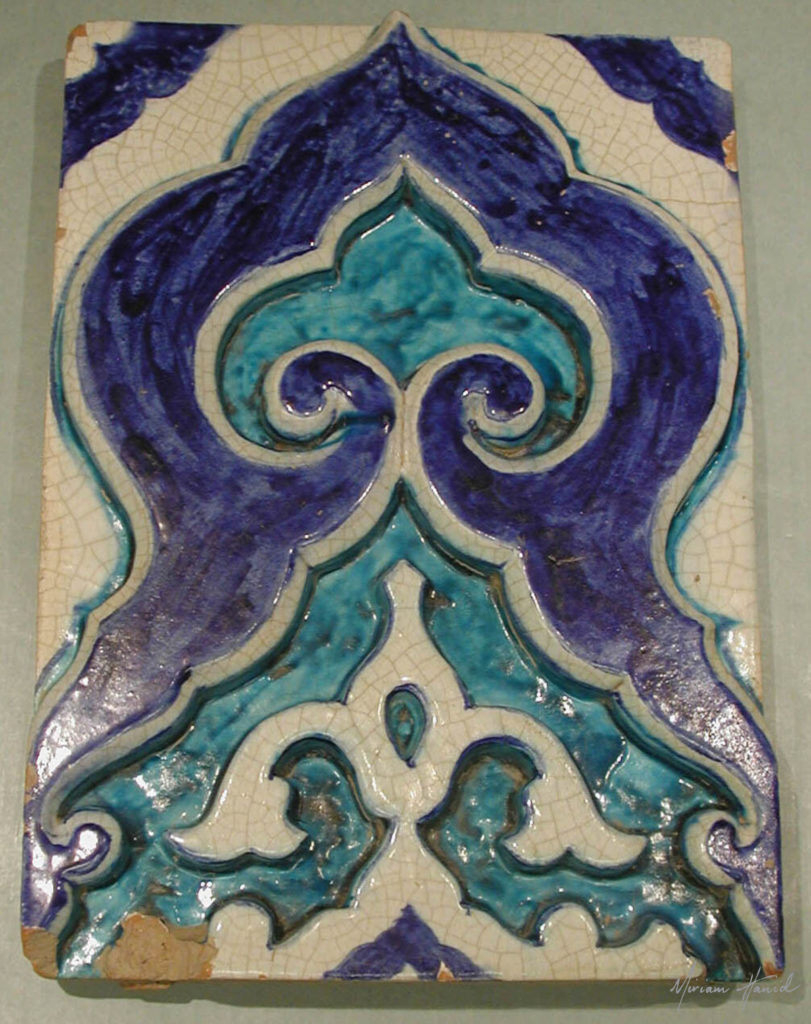
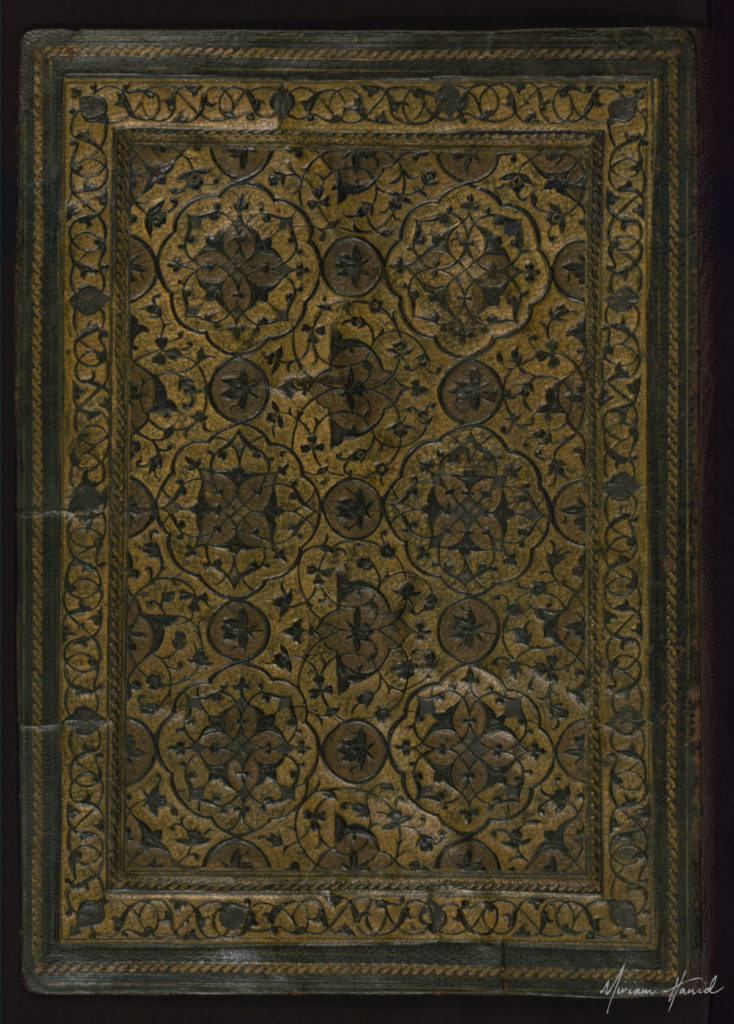
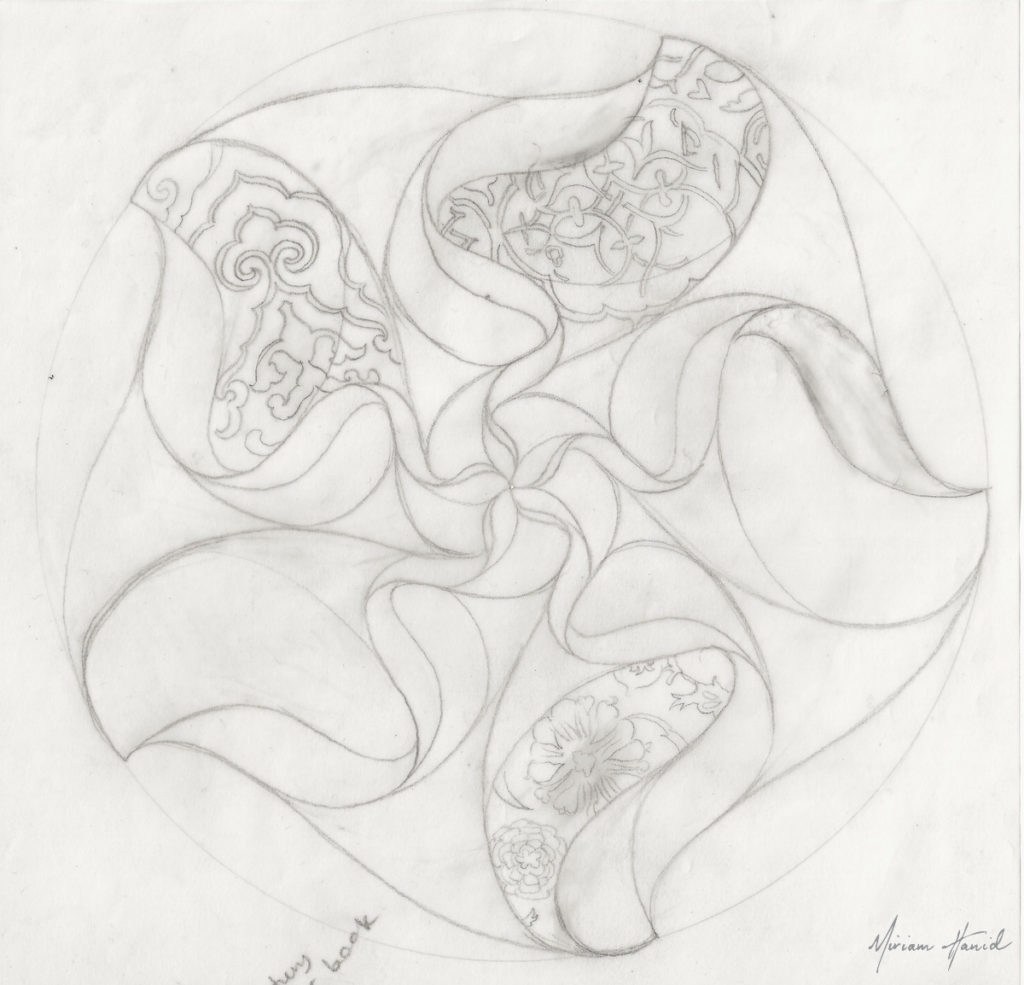
Creating the design of The Threads of Time
I started designing ‘The Threads of Time’ in 2021. I enjoyed looking at historic artefacts from the different time periods, such as ceramics, metalwork and textiles. I wanted to include some motifs in my piece as a nod to the styles which characterised those eras. I found floral and decorative patterns which were very satisfying to look at, and imagined them chased and repoussé chased in silver. However, after several attempts at combining visual elements of historic artefacts I’d found, I felt this wasn’t flowing and decided to abandon that way of working to create the design.
Abrar had particularly appreciated the simple theme of five ribbons which flowed from the centre of the piece outwards, which were part of my initial design. That concept was originally very sparse, with lots of empty space. We decided that this could be developed and made more ornate, decorative motifs being a characteristic which was common in all the historic works I’d looked at.
I therefore created one section which had the potential to flow into the next, (echoing the family’s history of moving across the continents and joining different cultures, as you’ll read later) and tessellated it round the piece, adding in five ‘tassels’ held together by small domed circles, each displaying the gold inlay work.
A few dots were joined and lines crossed and the design concept was complete, Abrar was very happy and we set to work in defining which symbols would characterise the five eras and be inlaid into the five circles. While the five eras represent our known family history, the central point of singularity from which the ribbons flow, is a contemplation of wider existential origins….
In future posts I will detail the progression of the design more comprehensively, the techniques used, and provide additional colour on my family history.
You may like to visit my gallery or media pages or perhaps learn more about my signature technique of chasing and repoussé.

